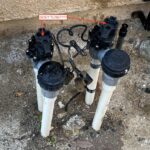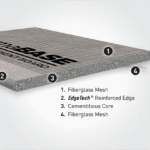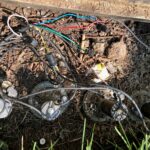
If you’re facing the perplexing issue of your LG dryer displaying the dreaded D90 error code, yet you’ve diligently checked and found no obstructions in your dryer’s venting system, you’re not alone. This enigmatic error can leave even the most seasoned homeowners scratching their heads. But fear not, as we’re here to guide you through the intricacies of the LG Dryer D90 code and how to resolve it, ensuring your laundry routine runs smoothly once more.
In this comprehensive guide, we’ll delve into the possible causes of the D90 code, explore the significance of proper dryer vent maintenance, and equip you with practical solutions to banish this error from your LG dryer’s display. Whether you’re a seasoned DIY enthusiast or just someone looking to keep their appliance running efficiently, you’ll find valuable insights to restore your dryer’s functionality and peace of mind. Say goodbye to the D90 code, and let’s get your LG dryer back on track.
Understanding The Lg Dryer D90 Code
If you’re experiencing the LG Dryer D90 code but no blockage, there may be a problem with the heating element or fuse. Check for any obstructions in the exhaust vent to troubleshoot the issue.
The LG Dryer D90 Code is an error code that indicates a blockage in the dryer duct or vent. However, there are instances when the code appears even when there is no blockage present. In such cases, it is important to understand the possible causes and the importance of addressing the D90 Code promptly.
What does the LG Dryer D90 code indicate?
- The D90 code indicates a blockage in the dryer duct or vent.
- It alerts users to check the airflow and clear any obstructions that may be causing the blockage.
Common Causes Of The Lg Dryer D90 Code
- Lint buildup in the lint filter: A clogged lint filter can restrict airflow, leading to the D90 code.
- Blocked or clogged dryer vent: Accumulated lint, debris, or other foreign objects in the dryer vent can trigger the D90 Code.
- A kinked or crushed transition hose: If the transition hose between the dryer and the wall is bent, twisted, or damaged, it can impede airflow and trigger the D90 Code.
- Damaged or restricted exhaust hood: A damaged or improperly installed exhaust hood can cause blockages in the vent, resulting in the D90 Code.
Importance Of Addressing The D90 Code Promptly
- Efficient drying: An unobstructed airflow is crucial for drying clothes effectively and efficiently.
- Preventing overheating: Restricted airflow can cause the dryer to overheat, posing a fire hazard.
- Extending the lifespan of the dryer: Regular maintenance and addressing the D90 Code promptly can help extend the lifespan of the dryer and prevent costly repairs or replacements.
Remember, it’s important to address the LG Dryer D90 Code promptly to ensure proper drying, prevent hazards, and maintain the longevity of your dryer.
Checking For Physical Blockages
If you’re encountering an LG dryer d90 code but there’s no blockage, try running the test without the hose connected. This can help clear the error, and then you can reconnect just the hose.
If you’re encountering the LG Dryer D90 code but there doesn’t appear to be any blockage, there are a few steps you can take to inspect and clear any potential obstructions. Follow these guidelines to ensure efficient drying and prevent the D90 code from reoccurring:
Clearing the Lint Filter:
- Remove the lint filter from the dryer.
- Inspect the filter for any buildup of lint or debris.
- If the filter is dirty, clean it by gently tapping it against a trash can or rinsing it under running water.
- Allow the filter to air dry completely before placing it back into the dryer.
Inspecting the exhaust vent for obstructions:
- Locate the exhaust vent on the back of the dryer.
- Check for any visible clogs or blockages, such as lint or debris.
- Use a flashlight to get a clear view and remove any obstructions you find.
- Ensure that the vent opening is clear and unobstructed.
Cleaning the exhaust vent ducts:
- Disconnect the dryer from its power source.
- Locate the exhaust duct on the back of the dryer.
- If accessible, detach the duct from the dryer and inspect it for any blockages.
- Use a vacuum cleaner or a long-handled brush to remove any accumulated lint or debris.
- Reattach the duct securely to the dryer.
- Follow the duct to the outside of your home and inspect the vent opening.
- If necessary, use a brush or vacuum to clean the vent opening as well.
By following these steps, you can effectively check for physical blockages in your LG dryer. Remember to clear the lint filter regularly and inspect the exhaust vent and ducts for any obstructions. By maintaining a clear and unobstructed airflow, you can resolve the D90 code issue and ensure optimal drying performance.
Verifying The Air Flow Sensor
To verify the airflow sensor on an LG dryer with a D90 code but no blockage, check that the lint filter is clean and run a test without the hose connected. If the error persists, there may be a blockage inside the exhaust vent or an issue with the heating element or fuse.
Locating the Air Flow Sensor on the LG Dryer:
- The airflow sensor on the LG dryer is a crucial component that monitors the flow of air during the drying cycle. By locating and testing this sensor, you can troubleshoot the D90 code without any blockage. Here’s how to find the airflow sensor on your LG dryer:
Testing the Air Flow Sensor:
- Once you’ve successfully located the air flow sensor on your LG dryer, it’s time to test it to verify if it’s functioning properly. Follow these steps to test the air flow sensor:
- Disconnect the dryer from the power source to ensure your safety.
- Remove any lint or debris that may be obstructing the sensor.
- Use a multimeter to measure the resistance across the sensor terminals.
- Compare the reading to the manufacturer’s specifications. If the reading is significantly different, the sensor may be faulty and need to be replaced.
Resetting the air flow sensor if necessary:
- If testing the air flow sensor reveals that it’s not functioning properly, you may need to reset it. Follow these steps to reset the air flow sensor on your LG dryer:
- Disconnect the dryer from the power source.
- Press and hold the power button for 20–30 seconds to discharge any residual power.
- Reconnect the dryer to the power source.
- Run a test cycle to check if the D90 code has been resolved.
Remember, the airflow sensor plays a crucial role in the proper functioning of your LG dryer. If you’re still experiencing the D90 code even after verifying that there’s no blockage, it’s important to consult a professional technician or reach out to LG customer support for further assistance.
Evaluating The Heating Element And Fuse
To evaluate the heating element and fuse when experiencing an LG dryer D90 code but no blockage, check for any problems or blockages with the heating element or fuse. This can help identify the issue and resolve the error code.
When your LG dryer displays the D90 code but there is no blockage, the issue may lie with the heating element or fuse. Here are the steps you can take to evaluate and troubleshoot these components:
Identifying Potential Issues with the Heating Element:
- Check if the heating element is visibly damaged or broken.
- Inspect the electrical connections of the heating element for any signs of loose or disconnected wires.
- Use a multimeter to test the continuity of the heating element. If there is no continuity, it means the heating element is faulty and needs to be replaced.
Checking the thermal fuse for functionality:
- Locate the thermal fuse, which is usually found on the blower housing or exhaust duct.
- Use a multimeter to test the thermal fuse for continuity. If there is no continuity, it indicates that the thermal fuse has blown and needs to be replaced.
Replacing Faulty Heating Elements or Fuses:
- If you have identified a faulty heating element or thermal fuse, you will need to replace them.
- Refer to the LG dryer’s user manual or online resources for instructions on how to access and replace these components.
- Make sure to purchase the correct replacement parts that are compatible with your specific LG dryer model.
Remember, if you are unsure about performing any of these troubleshooting steps or if the issue persists even after replacing the heating element or fuse, it is always best to contact a professional technician or LG customer support for further assistance.
By following these steps, you can effectively troubleshoot and resolve the D90 code on your LG dryer, even if there is no blockage.
Performing A Test Run Without The Hose Connected
To troubleshoot an LG Dryer D90 code with no blockage, try performing a test run without the hose connected. This can help determine if there is an issue with the hose or the airflow. If the error clears, reconnect the hose and check for any blockages or problems with the heating element or fuse.
When encountering the D90 code on your LG dryer, it is important to determine if there is a blockage causing the issue. One way to troubleshoot this is by performing a test run without the hose connected. Here is a step-by-step guide to help you through the process:
- Start by unplugging your dryer from the power source to ensure your safety.
- Locate the hose that connects the dryer to the vent duct or exhaust system.
- Disconnect the hose from the back of the dryer.
- Once the hose is disconnected, check both ends for any obstructions or blockages. Clean them if necessary.
- With the hose disconnected, reposition the dryer back to its original location.
- Plug the dryer back into the power source.
- Set the dryer to a regular drying cycle and select a moderate heat setting.
- Start the dryer and allow it to run for a few minutes.
- During the test run, pay close attention to the dryer’s display panel and look for any changes in the error code. If the D90 code clears during the test, it indicates that the blockage was in the hose or the venting system.
- After running the test, stop the dryer and unplug it from the power source once again before proceeding to the next step.
Reconnecting the Hose and Monitoring for Any Issues:
Now that you have successfully performed a test run without the hose connected, it’s time to reconnect the hose and ensure that there are no further issues. Follow these steps:
- Take the disconnected hose and securely attach it back to the dryer’s vent outlet.
- Make sure that the hose is properly aligned and tightly fastened to avoid any air leaks.
- Double-check both ends of the hose to ensure there are no blockages or obstructions.
- Once the hose is reconnected, cautiously move the dryer back to its designated location.
- Plug the dryer back into the power source.
- Run a test load of laundry using the same drying cycle and heat setting as before.
- Monitor the dryer closely for any indication of the D90 code reappearing or any other issues.
- If the D90 code doesn’t return and the dryer operates normally, it suggests that the issue has been resolved.
- If the D90 code persists or if you encounter any other problems, it’s recommended to seek professional assistance from an authorized LG service provider.
By following these steps, you’ll be able to run the LG dryer without the hose connected to determine if the D90 code clears. Reconnecting the hose afterward and monitoring for any issues will help ensure that your dryer functions properly and efficiently.
Seeking Professional Assistance
If you’re experiencing the LG Dryer D90 code but can’t find any blockages, seeking professional assistance is a smart choice. Experts can troubleshoot the issue and identify any underlying problems with the heating element or exhaust vent, ensuring your dryer is working efficiently.
If you’ve encountered the LG dryer D90 code but can’t find any blockage, it may be time to seek professional assistance. Here are some factors to consider when deciding to contact an appliance repair professional:
- When to contact an appliance repair professional:
- If the D90 code persists even after thorough cleaning and checking for blockages,
- If you are unsure about how to reset the flow sensor on your LG dryer,
- If you need help checking the airflow on your LG dryer,
- Finding trusted repair services in your area:
- Research local appliance repair companies that specialize in LG dryer repairs.
- Read reviews and ratings from previous customers to ensure reliability and quality of service.
- Consider asking friends and family for recommendations.
- Considerations for warranty coverage and authorized service providers:
- Check your LG dryer’s warranty to see if repairs are covered.
- If covered, contact LG customer support or visit their website to find authorized service providers.
- Authorized service providers are trained in LG dryer repairs and can ensure that the warranty remains valid.
Remember, reaching out to a professional can save you time and frustration when dealing with complicated error codes like the D90 on your LG dryer. They have the expertise to diagnose and fix the problem accurately and efficiently. So, don’t hesitate to seek their assistance when needed!
Frequently Asked Questions
What Does the D90 Code Mean on Dryers With No Blockage?
The d90 code on an LG dryer indicates a blockage, but if there is no blockage, it could be a sensor issue.
How Do You Reset the Flow Sensor on an LG Dryer?
To reset the flow sensor on an LG dryer, first make sure the lint filter is clean. Then, run the dryer without the hose connected, and the error should clear. Finally, reconnect just the hose to complete the reset process.
How Do I Check the Air Flow on My LG Dryer?
To check the airflow on your LG dryer, make sure the lint filter is clean.
Why Does My LG Dryer Keep Getting a D80 Code?
The LG dryer keeps getting a D80 code due to a blockage in the exhaust vent.
Why is my LG dryer showing the D90 code?
The D90 code on your LG dryer indicates a blockage issue that is preventing proper airflow.
Conclusion
To troubleshoot the LG Dryer D90 code with no blockage issue, it is essential to follow the proper steps. Firstly, ensure that the lint filter is clean and free from any debris. Additionally, check if the exhaust vent and hoses are clear of any obstructions.
If you have completed these checks and the D90 code persists, try resetting the flow sensor on your dryer. This can typically be done by turning off the power, waiting a few minutes, and then turning it back on. It is also recommended to refer to the LG dryer’s error code list or contact LG support for further assistance.
Remember, maintaining proper airflow is crucial for your dryer’s performance. By regularly cleaning the lint filter, exhaust vent, and hoses, you can prevent blockages and ensure efficient drying cycles. If issues persist, it is best to seek professional help to identify any underlying problems with the heating element or fuse.
Don’t forget to follow the manufacturer’s guidelines and utilize resources such as tutorials and forums for additional support.





